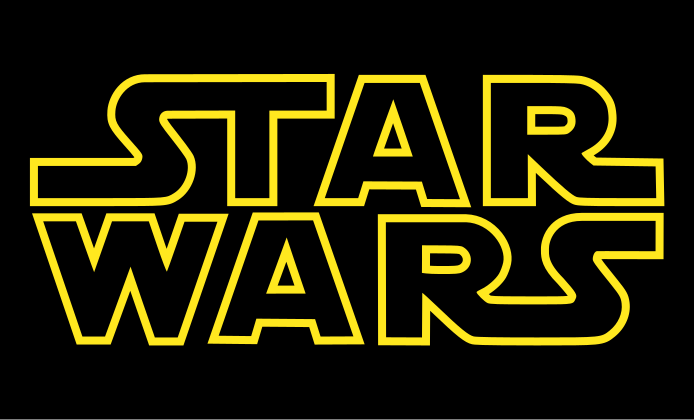The Legacy of Star Wars
/
Starting today, Orlando Florida becomes Lando Florida for the multitudes of Star Wars fans flocking to Celebration V. When it comes to Geek History, the Star Wars franchise represents a formative element of popular science fiction in theaters, and helped to define the modern blockbuster movie. 2010 marks the 30th anniversary of The Empire Strikes Back, and even three decades on, the series gains a considerable amount of face recognition from the general public. Often, when I have suited up in Storm Trooper or Clone Trooper armor, I've found that people might not know what character I am, what film I'm from, but undeniably, they know that I'm from the Star Wars films. With its release, Star Wars has changed both popular culture and the film industry that created it.
When the first Star Wars film was released in 1977 by director George Lucas, most expectations from the production companies was that the film would not do very well, but within the first three months of its release, Star Wars reined in over $100 million, becoming one of the highest grossing films ever. Subsequent releases in 1980 (The Empire Strikes Back) and 1983 (The Return of the Jedi) continued the series, bringing in new fans to the series by expanding the story and pushing the boundaries when it came to special effects. When Lucasfilm Ltd. returned to the franchise in 1997 with a re-release of the original trilogy with updated special effects, and in 1999 with The Phantom Menace, Attack of the Clones (2002) and Revenge of the Sith (2005), it became clear that the franchise had endured in public memory and financially, were highly successful, even it was widely felt that the Original Trilogy were superior films.
In 1977, the first Star Wars film was filmed in a period of time when special effects were still in their infancy. The largest special effects film previously had been Stanley Kubrick's 2001: A Space Odyssey in 1968, almost ten years earlier, a period of time which saw many special effects experts who had pioneered effects for that film retired. Thus, Lucas and his crew were forced to pioneer their own effects in motion capture on their own while they filmed the film, utilizing models and cameras together in very new ways. The Empire Strikes Back utilized its own advances in motion capture for several of the battles, and puppetry, as did Return of the Jedi when it came out. These advances helped to lay the groundwork for future films, and in the 1980s, a number of special-effects driven science fiction films were released, capitalizing on the successes of Lucas' trilogy, providing fans with more visual spectacles in the years since.
The Star Wars franchise is a notable one for retaining such a strong core group of fans throughout the years. Much of this success can be attributed to the branching out from the films as the single source of canon story. Marvel comics created their own Star Wars line, while the original Han Solo and Lando Calrissian book series have attained a sort of cult status. The introduction of Hugo award winner Timothy Zahn to pen a trilogy in the early 1990s launched an enormous series of books, many of which have been best sellers, continuing the story with new characters and transformations of the universe. This is after the huge numbers of toys, action figures and other collectables. In addition to pioneering special effects, Star Wars and Lucas pioneered the marketing of a film to a diverse and receptive audience, which keeps them in touch with the films long after they have left the theaters, whether its children reenacting their favorite scenes or readers wanting more stories after the credits have rolled.
The recent release of the prequel trilogy and the ongoing Clone Wars television series is another element to this continued marketing for the larger franchise as a whole. While the prequels don't match up with the originals for fans that grew up with them, it's irrefutable that they have been extremely popular, especially with younger generations. Their creation not only continues (or in this case, adds to) the story, but it works to revitalize the original films by introducing new fans who have yet to watch a series of films that most younger viewers will find outdated compared to what they will be used to with other, current films.

The notable element that this all leads to for Star Wars is the incredible fanbase that has been created as a result. Each Star Wars Celebration pulls in tens of thousands of people from across the world, while millions of others watch the films, read the books and listen to the soundtracks. Entire fan groups have come to life, from Theforce.net's FanForce, to the New York Jedi to the 501st Legion, which has just had its 5,000th member join. While numerous films and franchises look to create a comparable group of fanatics, the Star Wars franchise is the only one that comes to mind that regularly sees groups acting on their own in public, in costume to various charitable causes or fan gatherings. Personally, I'm a member of the 501st Legion, from behind my own helmet, it's very clear to see that the franchise remains because of the efforts that have been made to keep the fans happy with new content and stories.
The original Star Wars film that started all of this represented a number of changes in the way that films were marketed to fans, how the movies were filmed. George Lucas' creation alone is likely responsible for much of the current film industry that most science fiction fans (those who like the movies, anyway), which in turns helps to inform much of the public consciousness when it comes to science fiction in all genres.
